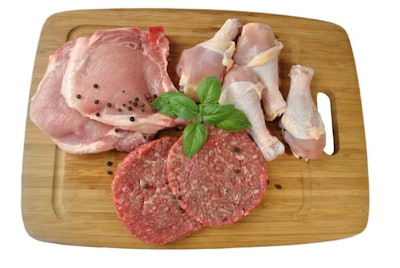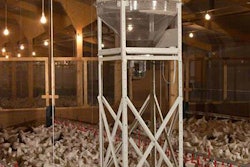
Animal protein industry able to produce more with fewer animals
Innovation is driving dramatic improvements in productivity in the poultry, beef and pork sectors, according to James Mintert, a professor at the Center for Commercial Agriculture at Purdue University.
Mintert spoke November 20 at the Midwest Agriculture Conference at the Federal Reserve Bank of Chicago.
“The productivity improvements arising from innovation are really the foundation of a sustainable food system,” he said. “And the productivity improvements in the livestock sector have been nothing short of dramatic.”
According to data presented by Mintert, the U.S. produced 60 billion pounds of poultry, beef and pork in 1990. By 2019, production had increased 70% to more than 100 billion pounds.
“That’s a huge change in a relatively short span of time,” he said. “Animal ag in the U.S. is a big industry; it’s always been a big industry. But it’s getting bigger, and it’s getting bigger in a fairly rapid way.”
Beef production per animal is up 23%, from 533 pounds of beef in 1990 to 657 pounds in 2018. Pork production per sow during the same period is up almost 90%.
Consumer trends, export demands
While production has increased, the quantity of meat that U.S. consumers eat has not increased as much; the average U.S. consumer is eating 12% more meat today than in 1990. Exports are driving the growth in production.
“You see a little bit of a disconnect: a huge increase in meat production and yet U.S. consumers are not the ones that are really eating it,” he said. “So, the growth has really been from the export side.”
In the 1980s, the U.S. was importing more meat than it was exporting, Mintert said. The crossover point was in 1990, and since then there has been fairly rapid growth and now, on a net basis, the U.S. is exporting just shy of 14 billion pounds of beef, pork and poultry. This is 12-14% of production on a net basis.
“The export side has really been the growth aspect for U.S. meat production, and it’s largely been driven by consumer income growth around the world,” he said. “And, as consumer incomes around the world are growing, those consumers have wanted to improve their diet and, for most people around the world, improving their diet means eating more animal protein.”
In the U.S., there has been a big increase in poultry consumption – a shift that has been underway for decades. In 1960, U.S. meat consumption was 21% poultry; today it is 50%. Meanwhile, U.S. pork and beef consumption has declined. In 1960, pork was 36% of consumption; today it is 23%. Beef consumption is down from 38% in 1960 to 26% today.
“So, a dramatic shift in production, a dramatic shift in the importance of international trade and exports, and a fairly dramatic shift in terms of what U.S. consumers are seeming to prefer in terms of that shift toward poultry,” Mintert said.
Improved technology, management
Improvements in technology and management practices has contributed to the increased production efficiency in the protein sectors.
It’s “an amazing technology story and management story that’s taken place over a short span of time,” Mintert said.
The ability to produce more protein with fewer animals allows for more food production at a lower cost, reduced land use, fewer greenhouse gas emissions and reduced environmental impacts, he said.
In the future, digital agriculture will allow for better data collection and analysis, and real-time management adjustments. This will lead to improvements in animal health, welfare, nutrition and waste management, resulting in an even more productive livestock sector.
If you’re interested learning more about consumer protein trends, register for the IPPE 2020 Feed Strategy Conference.









